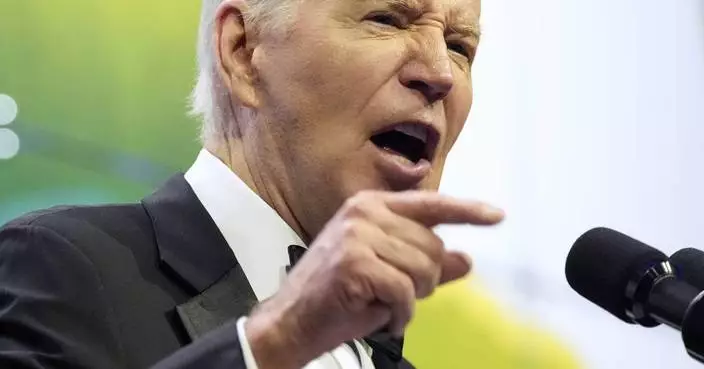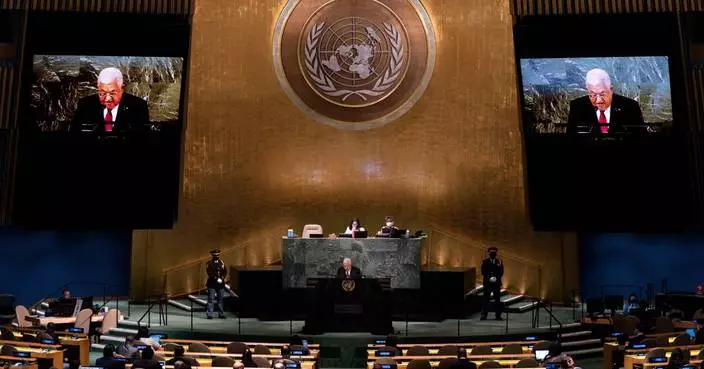Tiffany Haddish says she chose to join a boycott of Georgia after she read the state's new anti-abortion legislation.
Haddish announced this week that she had cancelled a show in the state and explained her reasoning Tuesday at the launch of a "Harry Potter" mobile augmented-reality game.
"The reason that I cancelled the show, is because I read that bill," she said. "And I feel like everyone should just take the time to read it."

Tiffany Haddish arrives at the MTV Movie and TV Awards on Saturday, June 15, 2019, at the Barker Hangar in Santa Monica, Calif. (Photo by Danny MoloshokInvisionAP)
The new law bans abortion once a fetal heartbeat is detected, which can be as early as six weeks, before many women know they are pregnant. It was signed into law on May 7.
Haddish had been scheduled to perform June 22 at the Fox Theatre in Atlanta. Major Hollywood studios have said they may reevaluate filming in Georgia. Celebrities like John Legend and Spike Lee have joined calls for a boycott.
The "Girls Trip" star on Tuesday was the host of an event that unveiled the new "Wizards Unite" video game at Universal Studios' Wizarding World of Harry Potter.
"I love everything about 'Harry Potter' because it teaches unity, it teaches friendship, it teaches loyalty, it teaches to believe in something," Haddish said.
NEW YORK (AP) — The number of U.S. fatal overdoses fell last year, according to Centers for Disease Control and Prevention data posted Wednesday.
Agency officials noted the data is provisional and could change after more analysis, but that they still expect a drop when the final counts are in. It would be only the second annual decline since the current national drug death epidemic began more than three decades ago.
Experts reacted cautiously. One described the decline as relatively small, and said it should be thought more as part of a leveling off than a decrease. Another noted that the last time a decline occurred — in 2018 — drug deaths shot up in the years that followed.
“Any decline is encouraging,” said Brandon Marshall, a Brown University researcher who studies overdose trends. “But I think it's certainly premature to celebrate or to draw any large-scale conclusions about where we may be headed long-term with this crisis.”
It's also too soon to know what spurred the decline, Marshall and other experts said. Explanations could include shifts in the drug supply, expansion of overdose prevention and addiction treatment, and the grim possibility that the epidemic has killed so many that now there are basically fewer people to kill.
CDC Chief Medical Officer Dr. Deb Houry called the dip “heartening news” and praised efforts to reduce the tally, but she noted “there are still families and friends losing their loved ones to drug overdoses at staggering numbers.”
About 107,500 people died of overdoses in the U.S. last year, including both American citizens and non-citizens who were in the country at the time they died, the CDC estimated. That’s down 3% from 2022, when there were an estimated 111,000 such deaths, the agency said.
The drug overdose epidemic, which has killed more than 1 million people since 1999, has had many ripple effects. For example, a study published last week in JAMA Psychiatry estimated that more than 321,000 U.S. children lost a parent to a fatal drug overdose from 2011 to 2021.
“These children need support,” and are at a higher risk of mental health and drug use disorders themselves, said Dr. Nora Volkow, director of the National Institute on Drug Abuse, which helped lead the study. "It’s not just a loss of a person. It’s also the implications that loss has for the family left behind.”
Prescription painkillers once drove the nation’s overdose epidemic, but they were supplanted years ago by heroin and more recently by illegal fentanyl. The dangerously powerful opioid was developed to treat intense pain from ailments like cancer but has increasingly been mixed with other drugs in the illicit drug supply.
For years, fentanyl was frequently injected, but increasingly it's being smoked or mixed into counterfeit pills.
A study published last week found that law enforcement seizures of pills containing fentanyl are rising dramatically, jumping from 44 million in 2022 to more than 115 million last year.
It's possible that the seizures indicate that the overall supply of fentanyl-laced pills is growing fast, not necessarily that police are whittling down the illicit drug supply, said one of the paper's authors, Dr. Daniel Ciccarone of the University of California, San Francisco.
He noted that the decline in overdoses was not uniform. All but two of the states in the eastern half of the U.S. saw declines, but most western states saw increases. Alaska, Washington, and Oregon each saw 27% increases.
The reason? Many eastern states have been dealing with fentanyl for about a decade, while it's reached western states more recently, Ciccarone said.
Nevertheless, some researchers say there are reasons to be optimistic. It's possible that smoking fentanyl is not as lethal as injecting it, but scientists are still exploring that question.
Meanwhile, more money is becoming available to treat addiction and prevent overdoses, through government funding and also through legal settlements with drugmakers, wholesalers and pharmacies, Ciccarone noted.
“My hope is 2023 is the beginning of a turning point,” he said.
AP medical writer Carla K. Johnson contributed to this report.
The Associated Press Health and Science Department receives support from the Howard Hughes Medical Institute’s Science and Educational Media Group. The AP is solely responsible for all content.

FILE - A container of Narcan, a brand name version of the opioid overdose-reversal drug naloxone, sits on a table following a demonstration at the Health and Human Services Humphrey Building on Friday, Sept. 8, 2023, in Washington. The number of U.S. fatal overdoses fell in 2023 — for only the second time since the current national epidemic of drug deaths began more than three decades ago. The Centers for Disease Control and Prevention posted the numbers on Wednesday, May 15, 2024. (AP Photo/Mark Schiefelbein, File)











